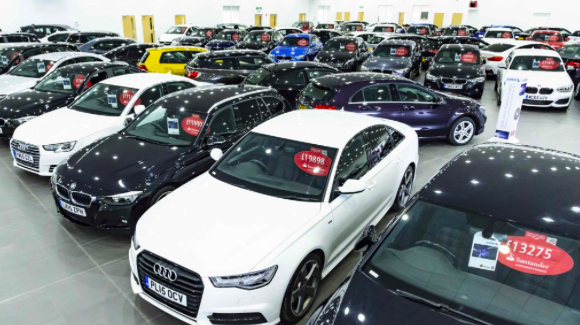Jonathan Prynn: The road ahead for Britain’s motor industry looks murky and hazardous

It is a cliché but an apt one to describe the state of Britain’s motor industry during the time of lockdown: simply a car crash.
If there was any thin silver lining to be had from today’s grim May registration figures from the SMMT it is that the ‘worst since’ comparison has forward gone from 1946 in April to 1952, when the Ford Prefect and the Austin 30 ruled the roads.
It is now four years since new car registrations peaked at 2.69 million in 2016. Since then the sector has been bedevilled by the huge uncertainty that followed the Brexit referendum, the diesel-gate controversy over emissions, and now most disastrously of all, a pandemic lockdown that is certain to be followed by a deep recession.
Sales are already lagging 50 per cent behind last year and despite showrooms reopening again on Monday it seems highly unlikely that the lost ground can be made up.
Forget the lockdown, it is now the worsening economic outlook that the industry has to worry about. If it wants a foretaste of what impact a slump can have on sales in need only peek at the SMMT’s helpful graph in its press release today.
In 2009, the year the economy went into a nosedive after the Lehman Brothers fiasco, sales were down more than six per cent. In that year GDP fell ‘only’ 4.2 per cent. This year could be double that, with unemployment peaking at close to an Eighties style ‘one in ten.’
That will have a huge knock on on effect on consumer confidence, with buying a new car – for most households their second biggest purchase – likely to fall down the league table of priorities. And that is even before the threat of a no-deal Brexit hoves into view later in the year.
As Howard Archer, chief economic adviser to forecasters the EY ITEM Club put it: “The near-term fundamentals for consumer spending have taken a substantial downturn as a result of coronavirus. Many people have lost their jobs, despite the supportive Government measures, while others may be worried that they may still end up losing their job once the furlough scheme ends. Additionally, many incomes have been affected. Furthermore, consumers are likely to adopt an extended cautious approach to discretionary purchases given the current economic environment.”
However, there is some hope. Anecdotal evidence suggests that there is pent up demand and visits to car websites have soared. James Fairclough, chief executiove of AA Cars, said: “In the last few weeks we have seen a really positive shift in consumer interest on the AA Cars platform, with a 71% month-on-month increase in views of used cars for sale. We’ve also seen requests for car finance jump by 134% compared to April, suggesting that interest is translating into intent to purchase. These are the glimmers of hope to be optimistic about.”
Most of the cars bought in that record breaking year of 2016 were on three or four year PCP deals that will soon need rolling over. It may be that the British love of credit combined with record low borrowing rates will pump enough financial adrenalin into the market to keep it going - at least in the short term. But if the post lockdown economy fails to fire up, there is a second deadly second wave or a chaotic Brexit pile up, all bets are off. The road ahead for the industry looks murky and hazardous.
Read more
Will there still be demand for London office space after the lockdown?
Analysis: Could London’s City boys start trading at 9am?
FTSE-100 falls as nervous traders eye ECB and Germany
George Floyd’s death to change US for good, says ad man Martin Sorrell

 Yahoo News
Yahoo News 
